Two Edmontosaurus fossils discovered in Wyoming were uncovered in such pristine condition that they're being called "mummies." Not only is their skin preserved in perfect detail, but researchers were also able to see something they'd never encountered on any dinosaur: hooves.
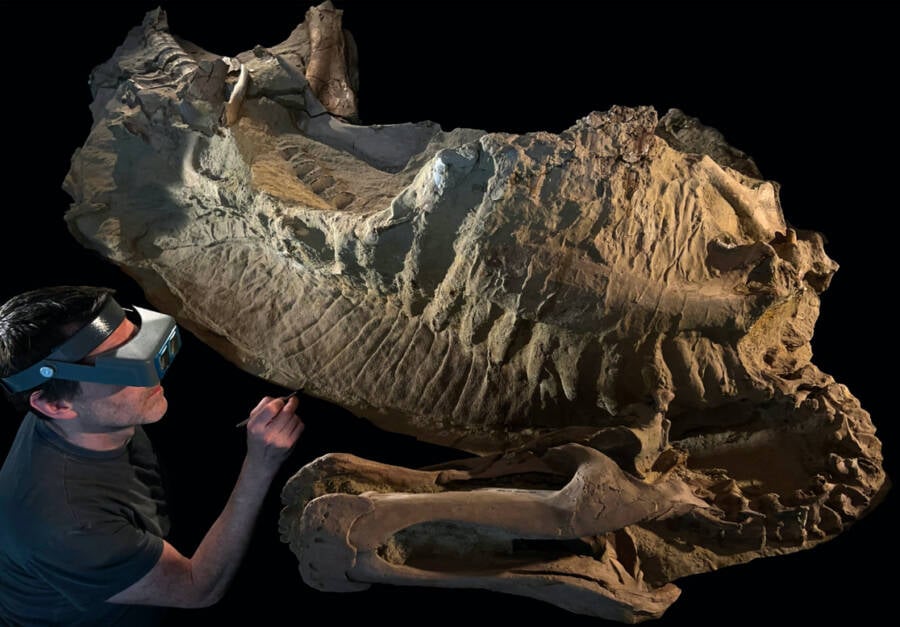
UChicago Fossil LabOne of the “mummies” of an Edmontosaurus annectens that was found in Wyoming.
Scientists in Wyoming have unearthed two Edmontosaurus annectens fossils with detailed features that are so well preserved that these specimens are being called dinosaur “mummies.”
Moreover, these fossils are so intact that, for the first time ever, researchers have been able to reconstruct the complete profile of a dinosaur and understand what it actually looked like, including the spikes along the creature’s tail and — most astonishingly — its hooved feet.
The Discovery Of Two Dinosaur “Mummies,” Intact Fossils With Preserved Skin
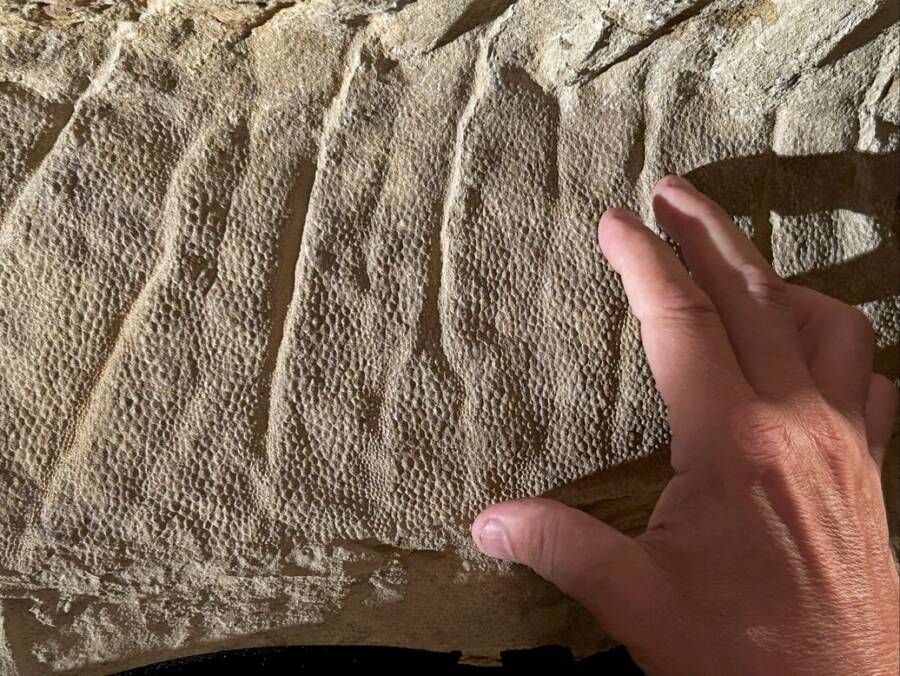
Tyler Keillor/UChicago Fossil LabThe scaly skin of this Edmontosaurus annectens dinosaur “mummy” is visible even to the naked eye.
Before the researchers could get to reconstructing the profile of the Edmontosaurus annectens, they had to relocate the sites in Wyoming where dinosaur “mummies” were located, though not all fully excavated, in the early 1900s. A new study published in the journal Science describes how the team mapped out an entire dinosaur “mummy zone” — although the term “mummy” might not mean what you think.
Unlike the mummified human remains of ancient Egypt, for instance, these dinosaur “mummies” contain no organic remains. Instead, physical features like the skin, spikes, and hooves of the dinosaurs were preserved in a clay film. Shortly after the dinosaur died, a layer of clay 1/100th of an inch thick covered the creature, “mummifying” its features (not unlike a Nodosaur “mummy” found in 2017).
“This is a mask, a template, a clay layer so thin you could blow it away,” said Paul Sereno, senior author of the study, in a statement from the University of Chicago. “It was attracted to the outside of the carcass in a fluke event of preservation.”
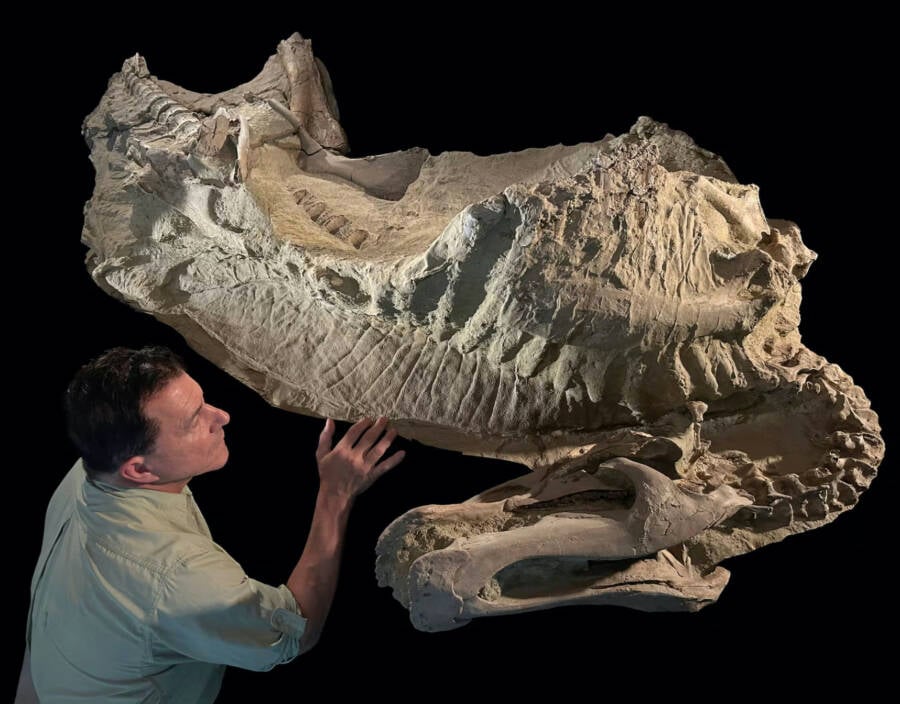
UChicago Fossil LabAlthough paleontologists have been unearthing dinosaur remains for 200 years, they’ve never found a truly intact specimen that revealed what these prehistoric beasts actually looked like — until now.
The team excavated two 66-million-year-old Edmontosaurus annectens “mummies” and got to work analyzing the remains. They used an array of imaging techniques, including micro-CT scans, X-ray spectroscopy, as well as physical examinations of the site to determine how exactly the preservation occurred.
After meticulous cleaning of the dinosaur “mummies,” the team used 3D imaging, CT scans, and the analysis of footprints to figure out how all of the pieces of these creatures’ anatomy fit together. Finally, digital artists helped to recreate the appearance of this duck-billed dinosaur like no prehistoric creature ever before.
“It’s the first time we’ve had a complete, fleshed-out view of a large dinosaur that we can really feel confident about,” Sereno explained. “We’ve never been able to look at the appearance of a large prehistoric reptile like this.”
Edmontosaurus Annectens: The First Known Dinosaur To Have Hooves
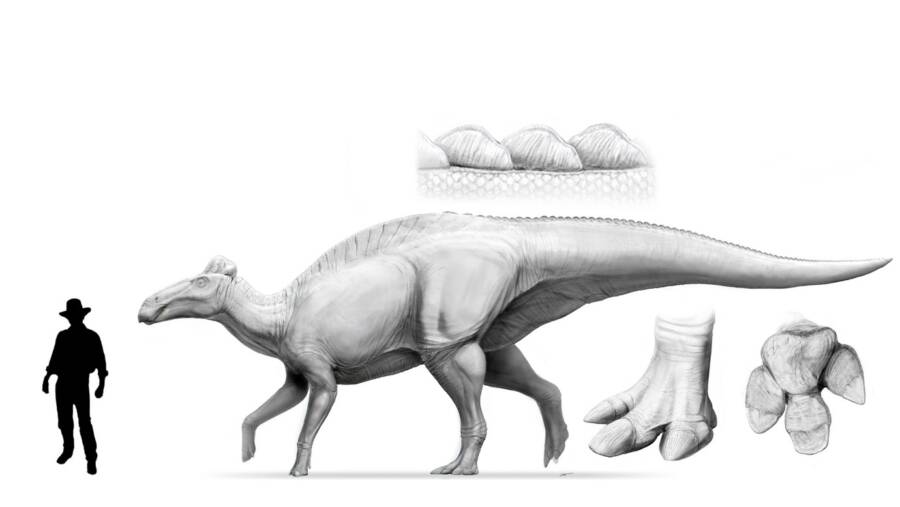
Dani NavarroA reconstruction of an Edmontosaurus annectens.
Piecing together this duck-billed dinosaur’s anatomy revealed some surprising features. Most shockingly, the larger of the two “mummies” revealed that Edmontosaurus annectens had hooves. This is the first time this feature has ever been seen in a dinosaur.
Researchers compared this find with 3D images of Edmontosaurus footprints from the same period, confirming the creature’s three hind toes were covered in a wedged hoof similar to that of a horse. Using both the “mummy” and the footprints, scientists were able to successfully reconstruct what the dinosaur’s hind foot looked like.
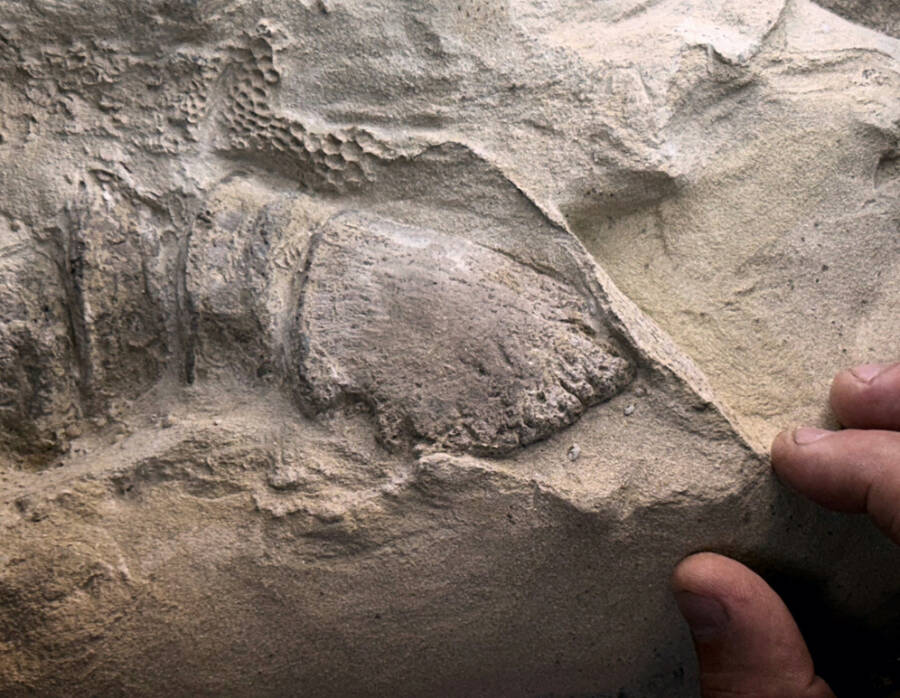
UChicago Fossil LabThe hoof of an Edmontosaurus, the first time this feature has ever been seen in a dinosaur.
Furthermore, the reconstructed Edmontosaurus annectens profile includes a fleshy crest along the neck that goes down to the hips. It also has a single row of spikes running down its tail, each one connected to a single vertebra.
“There are so many amazing ‘firsts’ preserved in these duck-billed ‘mummies’ — the earliest hooves documented in a land vertebrate, the first confirmed hooved reptile, and the first hooved four-legged animal with different forelimb and hindlimb posture,” said Sereno.
In addition to researchers’ unprecedented reconstruction of a fully fleshed-out dinosaur, this new study also provides a framework and toolkit for future analysis of dinosaurs’ soft tissue. Moving forward, the researchers are looking to analyze more dinosaur “mummies” from Wyoming and elsewhere.
“This may be the single best paper I’ve released,” Sereno said. “From field to lab to 3D reconstructions along with a suite of useful terms defined, it’s a tour de force, and it tells a coherent story about how these remarkable fossils come to be and what we can learn from them.”
After reading about these dinosaur fossils with preserved skin, discover the 125-million-year-old dinosaur perfectly preserved in volcanic ash. Then, see 31 of the most astonishing dinosaur facts.





